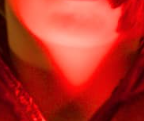Following the 101th meeting, I would like to make a few comments about Alex´s latest experiment.
Why do I prefer the focus distance at 1000 ? Because I feel like tonality and luminance is much more preserved. It really reminds me these experiments from back in the day where we tried to show that “tonality” matters.
Look at this for instance :

With a focus distance at 3, I don´t feel at all the (quadratic) decay of the light. This looks “wrong” to me. ![]()
I really agree with this statement from Christopher :
- We don’t absolutely need to know how the human visual system works.
- We only really need to know how to make pictures work! […]
- WTF is going on with the shadows and the blue light on the pool table in blue bar!
- How did it look? How should it look? How could it look? […]
And my take on “how pictures work” is that (smoothness of) gradients are absolutely essential to picture formation (this is what I care about as a lighter). So I support 100% Pekka´s suggestion to look at gradients and I do agree that the “compression rate” on the “path-to-peak-brightness” is essential.
Overall I feel it is complex to wrap up this VWG because we haven´t made a clear choice as a group on which design requirement should be prioritized above others. On the list we have :
- Should look good out-of-the-box.
- Must be invertible.
- Must reach corners of the display gamut (somehow ?)
And my fear is that because we try to please these three requirements, we will end up with a “jack-of-all-trades” Output Transform (I will not use the acronym DRT here since it is a Baselight term).
The only way that I can think of to satisfy these tree requirements is to provide a very good set of LMTs to be used with ACES 2.0.
Regards,
Chris
PS : About the “looking good out of the box” requirement, just a friendly warning that it seems that this prototype is clipping (breaking the smoothness of gradients). You can see it on the neck here :
